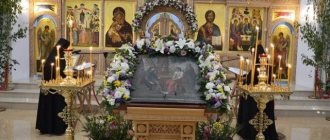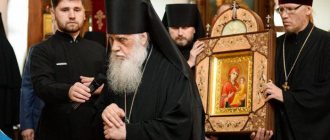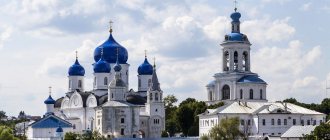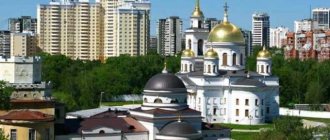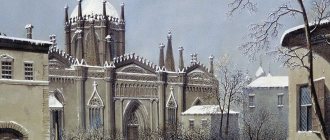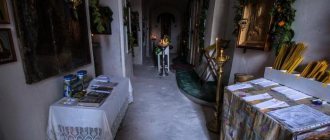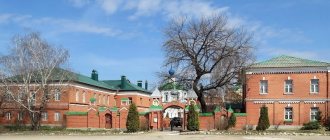Mir
Russia Arkhangelsk region village of Sura Sura St. John the Theological Convent Map is loading…
{"format":"leaflet","minzoom":false,"maxzoom":false,"limit":50,"offset":0,"link":"all","sort":[""], "order":[],"headers":"show","mainlabel":"","intro":"","outro":"","searchlabel":"\u2026 \u0441\u043b\u0435\ u0434\u0443\u044e\u0449\u0438\u0435 \u0440\u0435\u0437\u0443\u043b\u044c\u0442\u0430\u0442\u044b","default":"","import-annotation":false,"width ":"auto","height":"350px","centre":{"text":"","title":"""link":"""lat":63.57630000000000336513039655983448028564453125,"lon": 45.6355769999999978381310938857495784759521484375,"icon":""},"title":"","label":"","icon":"","lines":[],"polygons":[],"circles":[ ],"rectangles":[],"copycoords":false,"static":false,"zoom":8,"defzoom":14,"layers":["OpenStreetMap"],"image layers":[] ,"overlays":[],"resizable":false,"fullscreen":true,"scrollwheelzoom":true,"cluster":false,"clustermaxzoom":9,"clusterzoomonclick":true,"clustermaxradius":80, "clusterspiderfy":true,"geojson":"","clicktarget":"","showtitle":true,"hidenamespace":false,"template":"","userparam":"","activeicon": "","pagelabel":false,"ajaxcoordproperty":"","ajaxquery":"","locations":[{"text":"\u003Cb\u003E\u003Ca href=\"/palomnik/%D0% A1%D1%83%D1%80%D1%81%D0%BA%D0%B8%D0%B9_%D0%98%D0%BE%D0%B0%D0%BD%D0%BD%D0%BE- %D0%91%D0%BE%D0%B3%D0%BE%D1%81%D0%BB%D0%BE%D0%B2%D1%81%D0%BA%D0%B8%D0%B9_%D0 %B6%D0%B5%D0%BD%D1%81%D0%BA%D0%B8%D0%B9_%D0%BC%D0%BE%D0%BD%D0%B0%D1%81%D1%82 %D1%8B%D1%80%D1%8C\" title=\"\u0421\u0443\u0440\u0441\u043a\u0438\u0439 \u0418\u043e\u0430\u043d\u043d\u043e-\u0411\u043e\ u0433\u043e\u0441\u043b\u043e\u0432\u0441\u043a\u0438\u0439 \u0436\u0435\u043d\u0441\u043a\u0438\u0439 \u043c\u043e\u043d\u0 430\u0441\u0442\u044b\u0440\ u044c\"\u003E\u0421\u0443\u0440\u0441\u043a\u0438\u0439 \u0418\u043e\u0430\u043d\u043d\u043e-\u0411\u043e\u0433\u043e\u0441\ u043b\u043e\u0432\u0441 /u043a\u0438\u0439 a\u003E\u003C/b\u003E \u003Chr /\u003E\u003Ca href=\"/palomnik/%D0%A1%D0%B2%D0%BE%D0%B9%D1%81%D1%82%D0%B2%D0%BE:%D0% 90%D0%BD%D0%BD%D0%BE%D1%82%D0%B0%D1%86%D0%B8%D1%8F\" title=\"\u0421\u0432\u043e\u0439\u0441\ u0442\u0432\u043e:\u0410\u043d\u043d\u043e\u0442\u0430\u0446\u0438\u044f\u003E\u0410\u043d\u043d\u043e\u0442\u0430\u0446\u 0438\u044f\u003C/a \u003E: \u0436\u0435\u043d\u0441\u043a\u0438\u0439 \u043f\u0440\u0430\u0432\u043e\u0441\u043b\u0430\u0432\u043d\u044b\u0439 \u043c\u043e\u043d\u0430\ u0441\u0442\u044b\u0440\u044c \u0432 \u0441\u0435\u043b\u0435 \u0421\u0443\u0440\u0430, \u043d\u0430 \u0440\u043e\u0434\u043 8\u043d\u0435 \u0441\u0432. "" title":"\u0421\ u0443\u0440\u0441\u043a\u0438\u0439 \u0418\u043e\u0430\u043d\u043d\u043e-\u0411\u043e\u0433\u043e\u0441\u043b\u043e\u0432\u0 441\u043a\u0438\u0439\u0436 \u0435\u043d\u0441\u043a\u0438\u0439 \u043c\u043e\u043d\u0430\u0441\u0442\u044b\u0440\u044c","link":"","lat":63.576300000000003365 13039655983448028564453125,"lon":45.6355769999999978381310938857495784759521484375 ,"icon":""}],,"imageLayers":[]}
63.576623; 45.633806
Russia, Arkhangelsk region, Pinezhsky district, Sura village, near Pogost
Sura village, Arkhangelsk region
Russia
Telephone
: +7(81856) 5-22-92; 5-21-12
St. John the Theologian Sursky Monastery
- a women's Orthodox monastery in the village of Sura, in the homeland of St. John of Kronstadt.
History[edit]
The Sura women's community was founded in the village of Sura in 1899 on the initiative of Archpriest John Sergiev (St. John of Kronstadt). In 1900, the community was transformed into a run-of-the-mill convent. Initially, a wooden church in honor of John the Evangelist and monastic cells were built. Since 1907, the monastery had a courtyard in Arkhangelsk. In addition, the Ioannovsky Monastery in St. Petersburg was also first founded as a metochion of the Surskaya community.
The convent created by Father (there were about 200 sisters in it in 1915) was widely involved in charity: it provided assistance to the needy and suffering, supported the relatives of dead soldiers, collected funds for charitable purposes, and also gave alms. The monastery had a reading room, where Orthodox magazines and newspapers were ordered for parishioners, and various workshops operated.
The convent was a center of education in Sura and surrounding lands. There was a parochial school for children and a Sunday school for adults, where everyone could not only learn Orthodox prayers, but also learn literacy, sewing, needlework, knitting and clothing repair. A pharmacy and a hospital for the common people were also opened here.
The monastery and the Arkhangelsk metochion were closed in the 1920s. Until the end of 1941, nun Angelina (Trukhina) lived in the village of Sura. She was arrested for the fact that “secret religious services were being held” in her house, and on June 22, 1942, she was shot.
Sursky Convent
HISTORY OF THE CONVENTION
Nuns of the Sursky St. John the Theological Convent (photo from the early 20th century)
You can learn about the first days of the monastery in Sura from the poetic chronicle compiled by the abbess of the Novgorod Predtechensky Leushinsky Monastery Taisiya, who, at the request of Father John, raised the first sisters.
In the summer of 1899, Father John consecrated the place where the first buildings were to go up. By the summer of next year, construction was completed. It was a two-story log building, roofed with iron, in which, in addition to the refectory, kitchen and storage rooms, there were 20 spacious, light cells that could accommodate 3-4 sisters. On the eastern side, the building began with a temple in honor of the Apostle and Evangelist John the Theologian. It was burned in the early 30s. Deacon of the Sura parish Georgy Makkaveev, who worked a lot during the construction of the building, was appointed priest at the church.
The women's community of the future monastery was approved by the Decree of the Emperor and the Holy Synod on October 27, 1899. For the establishment and maintenance of this community, the village peasants allocate 10 acres of land and a forest plot from state-owned dachas.
The construction of the monastery was carried out with the money of numerous admirers of Father John, including representatives of the reigning house of the Romanovs, the Pinega timber merchant Kyrkalov Severyan Kuzmich.
Father John himself came to open the new monastery. On June 19, a solemn all-night vigil began in the middle of the community church. Together with Father John, 9 priests and 4 deacons served, and on June 20, 1900, the solemn consecration of the temple took place. Father John addressed all those present: “...The Lord vouchsafed me to found a monastic convent in my native village and to consecrate this new church with it. This is God’s greatest mercy to me and to the sisters and to the residents of the village. Since the monastery is, first of all, a holy place of constant godly deeds of prayer, obedience and all Christian virtues and can serve as an excellent living example of piety and work life for everyone around.” The church was consecrated in the name of the holy Apostle and Evangelist John the Theologian, and the young monastery received the same name. At the end of the liturgy, Father John preached a sermon: “Your first task, sisters, should be contemplation of God and prayer. The second is constant abstinence in food and drink, purity of thoughts and feelings, bodily labor and unquestioning obedience, teaching yourself meekness and humility according to Christ’s commandment “learn from me that you are meek and lowly in heart.”
In November 1900, by decree of the Arkhangelsk Theological Consistory, the Sursky St. John the Theological Convent was established. According to the plan of Father John of Kronstadt, the monastery was supposed to perform the following functions: to be an example of piety and hard work, to be an educational center for the laity, to conduct missionary activities (primarily in the fight against the Old Believers in Pinega), and to carry out charitable activities. Become “a charity for the elderly, a shelter for orphans, a refuge for the poor and the homeless.”
Three years later, S. V. Zhivotovsky (he accompanied Father John to his homeland) wrote: “I have seen many monasteries and convents in Rus', but I have never seen anything like this before. Not a monastery, but some kind of institute. Whatever the nun, she’s a 17-18 year old child...” They came here from St. Petersburg, Kronstadt, Peterhof and other parts of the country. There were also those among them who spoke French.
The number of sisters of the monastery in different years: 1899 - 35, 1903 - 137, 1907 - 148, 1909 - 156, 1917 - 196. The lists at the time of the closure of the monastery on January 1, 1921 included 135 sisters, 19 of which were nuns .
THE WORKS OF THE SISTERS
Each sister in the monastery had her own job: they worked as carpenters, sang in the choir, looked after livestock, sewed and repaired shoes, baked prosphora and bread, prepared kvass, taught at the women’s monastery school, did laundry, sewed and embroidered, worked in a brick factory, they painted icons, cooked food for the sisters, and cleared the forest.
Each sister carried out prayer work. Every day at 5 a.m. all the nuns and novices religiously gathered for Midnight. Then at half past seven in the morning the Divine Liturgy was celebrated. There were also services in the evening. The incessant Psalter was read. Before going to bed, the sisters gathered at the temple, where the Pentecentenary was celebrated.
Having lived for many years within the walls of the monastery, the sisters who were most successful in obedience and prayer were awarded monastic vows.
ABOUT THE PROPERTY OF THE MONASTERY
The monastery was located within a stone fence. Inside there was a 15-foot stone bell tower, a wooden house church in the name of the Holy Apostle and Evangelist John the Theologian, a two-story stone building with mezzanines and a refectory, a three-story wooden nursing building, a two-story wooden school building and a dormitory for girls, a one-story workshop building with two mezzanines , a gazebo for relaxation, a vegetable garden and a pine grove, a two-story house for the priest of the monastery of George Makkoveev. In addition, there were 6 more non-residential buildings within the fence, and 6 residential and 14 non-residential buildings behind the fence. These include a hotel with a refectory and Father’s home, moved closer to the monastery.
Assumption Church. Summer 1986 Author Vitold Muratov
In 1909, a stone bell tower was built, the foundation stone of which was laid by Father John on his last visit to his homeland in 1907. On June 13, 1914, Bishop Nathanael of Arkhangelsk and Kholmogory laid the foundation stone for a stone church, and a year later, on June 12, 1915, a church with three boundaries was consecrated in honor of the Dormition of the Holy Mother of God, All Saints and the Great Martyr Alexandra (?). In 1913, the foundation of a stone nursing building was laid, but due to a lack of funds, the building was not completed.
Father John donated to the monastery a steamship he owned and a trading store with an annual turnover of up to 10,000 rubles.
SKIT MONASTERY
For the needs of the monastery, at the request of the priest Georgy Makkoveev, by Decree of His Majesty Nicholas II, a ship's state grove was donated on the Letovsky Hills, 18 km from Sura, with an area of 291 dessiatinas, 1,200 square fathoms, which became the monastery's hermitage (in documents from 1906, 334 dessiatines of land are listed). On June 9, 1901, Father John visited Letovskaya Grove. Arriving on foot at the highest hill, the priest admired the view of the surrounding area, from where the whole of Sura was visible. Right there on the hill, Father John blessed the site for the future church.
A year later, on June 14, 1902, after the water-blessing prayer, Father John consecrated the throne, and then the first Liturgy in the new wooden carved church of the monastery in the name of the Life-Giving Holy Trinity with a residential building and a bell tower 21 m high, 6 m in circumference, 18 m long. Nearby there were 4 residential buildings and 6 outbuildings. The inventory of the property of the monastery in the Skete includes: a wooden barnyard with living quarters for sisters, a mezzanine, a barracks for workers, a bathhouse, a gatehouse, a barn, a barn, a stable, 2 cellars. Farm - several cows and heifers, bulls, horses, goats, sheep and chickens. We grew vegetables and livestock. There are rich hay pastures around.
The temple burned down in 1902 and was rebuilt in 1911. The new temple was built exactly like the old one at the expense of the benefactor Mikhail Ivanovich Petrov. The temple had a three-tiered iconostasis, there were 60 icons, mostly done in oil paints on boards. Adjacent to the temple was a bell tower with 6 bells.
The temple was set on fire on the May Day holidays in the 60s, and in its place for a long time stood three forged crosses from the completion of the temple. The largest cross was about three meters.
ABOUT THE ACTIVITIES OF THE MONASTERY
Already at the time of its formation, the monastery carried out some types of missionary and educational activities. Educational work was immediately organized among the local population, which was carried out in two directions - work with adults and work with children.
In 1900, at the monastery, on the initiative and blessing of Father John of Kronstadt, a one-class parochial boarding school for peasant girls was opened, where students received primary education. The school program was designed to educate a future housewife and mother. A capital of 40,000 rubles was allocated for the maintenance of the school. The school was located in a house specially built for this purpose on the territory of the monastery. The teacher of the law is priest Georgy Mikhailovich Makkoveev, the teacher is deacon Pyotr Vasilyevich Nikolsky, the sisters of the monastery teach singing and needlework. There was a dormitory at the school. The monastery sisters were also teachers. In the year the school was founded, 1900, there were 31 girls studying there. By order of the inspector of public schools dated September 29, 1917, the Surskaya women's parish church
The school was transferred to the jurisdiction of the Ministry of Public Education, both the school building and the property and capital. The novice of the monastery, Maria Nikitichna Krasilnikova, teaches. Students – 20 girls.
A reading room was opened in the monastery; it contained books of 33 titles: 67 books of liturgical content and 19 of spiritual content. The monastery subscribed to newspapers and magazines. On Sundays and patronal feasts, spiritual and moral narratives were read, and sometimes pictures were shown “through a lantern.”
Economic activity was established: they kept cows, horses and sheep, grew various crops, had their own steam flour mill (the population of nearby villages ground flour there), a bakery, a brick factory, a steamship (the only transport from Arkhangelsk to the upper reaches of Pinega), and a forge. At the monastery there was a sewing, painting and shoemaking workshop, a pharmacy and a hospital were opened, where sisters looked after the sick.
The monastery was engaged in various types of charitable activities: providing assistance to needy peasants, helping the relatives of dead soldiers, raising funds for charitable purposes, raising peasant girls at the monastery, and distributing alms.
The phenomenon of the Sursky monastery was that special attention was paid to serving the world, and not to renouncing it. Throughout the history of the Sursky Monastery, its nuns freely communicated with the population of Pinega, were actively involved in educational and charitable activities and earned the trust of Pinega residents. This is confirmed by the numerous departures to the monastery of residents of the Pinega district.
ABOUT THE MONASTERY COMPOUNDS
Sursky Monastery of John of Kronstadt
The monastery had metochions in Arkhangelsk and St. Petersburg, which in 1902 were transformed into an independent women's monastery of St. John the Theologian on Karpovka.
The Surskaya metochion in Arkhangelsk was founded in 1903 and was originally located in a wooden two-story building on the Northern Dvina embankment, which had cells for sisters and a chapel. In June 1906, Father John laid the foundation stone for the building. It was built in October 1907 and became a decoration of the city. Archpriest Dimitry Andreevich Fedosikhin, a secret monk, spiritual son and disciple of Father John, served in the church of the metochion. Initially, 10 sisters were obedient to the metochion, by 1917 - 30. In 1913, Princess Elizaveta Fedorovna visited the Surskoe metochion in Arkhangelsk.
In February-March 1917, the abbess of the monastery corresponded about the opening of another metochion at the Church of “Joy of All Who Sorrow” in
Orantenbaum city forest, which was supposed to become a home for orphans.
ABBES OF THE MONASTERY
- Abbess Varvara (in the world Nadezhda Ivanovskaya)
1900—1902
From childhood she had a deep, firm faith and was literate. She needed dedication and patience to raise real ascetics from young and inexperienced sisters.
- Abbess Porfiria (in the world Ekaterina Alekseevna Glinko)
1902—1917
During her time, major construction work was carried out in the monastery, and the Trinity Monastery was built in Letovskaya Grove. Thanks to Abbess Porfiria, the monastery parochial school expanded. The activities of Mother Porphyria were highly appreciated by John of Kronstadt himself. In 1917, mother left the Sura monastery and left Sura forever.
- Abbess Seraphima (in the world Anastasia Efimova)
1917—1920
Abbess Seraphima was one of the very first novices of the monastery, which she entered with the blessing of John of Kronstadt. Until 1917, she was the head of the Arkhangelsk Sursky metochion. During the years of Mother Seraphima’s novitiate, in mid-June 1903, during Father John’s next trip to his homeland, an amazing incident happened to her, which N. Bolshakov mentions in his book. Then novice Anastasia, who was the eldest sister in the Arkhangelsk courtyard, became seriously ill. Due to her fatal illness, another sister had already arrived from Sura to replace her. But, to the amazement of everyone, after Father John confessed and gave communion to the fading Anastasia, her health and strength returned, and on the third day after her healing she was able to appear at the Holy Trinity Cathedral to thank the Lord for the miracle of healing. The most bitter years of the monastery occurred during the service of Abbess Seraphim.
THE FATE OF THE MONASTERY AND THE SISTERS AFTER THE REVOLUTION
After 1917, the monastery was outlawed, although some of the sisters (16 people) of their own free will went to work in institutions of Soviet power - in the Karpogorsk and Surskaya hospitals, in the Karpogorsk department of public education, in the Verkolsky executive committee.
On December 8, 1920, the Sursky Volost Congress of Soviets decided to liquidate the monastery. The sisters petitioned the Arkhangelsk Provincial Council of National Economy: “We consider the resolution unmerciful, since we have been living in the monastery for 21 years. There is not a single potbelly stove among us, and we came to bare sand, where there was no structure, which we had to begin with our own labor: digging ditches, pulling out stumps to clear a place for construction, developing land and clearing for haymaking and a vegetable garden, carried raw bricks. If you need our premises, then allow us to retire to Skete, where we will be given land, which we will cultivate and feed ourselves with our own labor, so as not to use imported bread...” The document was signed by Abbess Seraphima, nun Raphaila and others.
But to their request they received the answer: “The Soviet government needs workers, but the Soviet government does not intend to allow the formation of hermit unions of people who kill themselves.”
The lists for January 1, 1921 include 135 nuns of the monastery. In January 1921, the Sursky Monastery ceased to exist.
According to the stories of local residents, at the beginning of the war, the nuns who remained in Pinezhye were arrested, put on a barge and drowned, disconnecting the barge from the ship in the White Sea. Other information is that they were arrested and drowned in a lake in the Karpogor region. Some of the homeless nuns moved to Arkhangelsk and lived semi-legally in other people’s apartments. As Malkina Lyubov Alekseevna, the great-niece of John of Kronstadt, recalls, during the war years she visited the apartment of the former Sura nuns Agapya Mikhailovna and Martemyan in Solombala, they lived poorly, worked as cleaners at the technical school, but at home they kept many icons and ancient books, and secretly prayed to God.
The largest number of Sura nuns visited St. Elias Cathedral in Arkhangelsk. Their graves are preserved around this temple. Nun Savvatia, who died on February 14, 1957, is buried to the right of its wall. Next to her is Mother Zosima. Not far from them is the nun Matrona, who bore the obedience of a bell-ringer, who died on March 28, 1970 at the age of 80. Next to her is nun Natalia Ivanova. To the right of the cathedral bell tower are buried the former treasurer of the monastery, Schema nun Ioanna, and the altar attendant of the Sursky Monastery, nun Seraphim,
The fate of the daughters of the Sursky peasant Lukian Vasilyevich Laryushev - Alexandra and Daria, nuns of the monastery - is tragic. Alexandra was very ill as a child, and her mother made a vow: if the girl was cured, she would give her to serve the Lord. Sasha has recovered. In 1900, the Surskaya monastery opened, and thirteen-year-old Sasha was among its first students. Father John himself patronized her, hoping that in the future she would make a good abbess. Already a nun, Alexandra Laryusheva was close to Abbess Porfiria and carried out her most important assignments. After the monastery was closed, Alexandra left for Murmansk, where her brother Ivan sheltered her. Alexandra returned to Sura at the beginning of the war and lived with her sister Daria, who also lived in a monastery from the age of sixteen. On the morning of November 16, 1941, during a common prayer with the remaining nuns, they were arrested. Daria was soon released, and Alexandra (as the leader of a counter-revolutionary group of clergy) and other nuns were taken away. By decision of a special meeting of the NKVD of the USSR on May 27, 1941, Alexandra was imprisoned for 10 years in a correctional labor camp. She died in prison on August 10, 1942. And on April 10, 1958, she was posthumously rehabilitated. Her photo archive remained in Sura with her sister Daria, who carried out voluntary obedience all her life. For the performance of church sacraments, fellow countrymen began to turn to her, since there were no priests or nuns left in Sura. She performed funeral services for the dead, baptized newborn children, but maintained secrecy. This went on for 40 years. They intimidated her more than once, even collecting incriminating evidence.
PRIESTS OF THE MONASTERY
House Church of John of Kronstadt (House of G. Makaveev)
Priest Georgy Makkabeev is a very authoritative person. With the blessing of Father John, from 1900, while still a deacon, he was the manager of the construction of church buildings and the main initiator of profitable enterprises for the benefit of Sura, regularly sending reports on the state of affairs in the monastery. On his initiative and under his direct supervision, a brick and sawmill were built. Father George himself drew the plans for the buildings. According to his own drawing, he built a beautiful two-story house, unusual for these places. During his visit to Sura, Father John, to the unspeakable joy of his hosts, stayed in this hospitable house. He was given a room on the 2nd floor overlooking the monastery. In 1902, Father George was ordained a priest. He enjoyed great respect from the sisters of the monastery. In addition to performing divine services, he was engaged in educational activities among local peasants and was a teacher of the law at a monastery school. In 1912, Father George was transferred to the Chardonem parish of Pinega district.
In 1920, Father George was arrested and suffered martyrdom.
FROM THE HISTORY OF SURSKY PARISH
In the 12th century, the first Russian churchyard-factories arose along the Pinega River. Apparently, one of these graveyards was located in Sura. This is indicated by the name of one of the fragments of Sura - graveyard. In addition, the very name of the village - village - until the 14th century was an indicator that this land was a princely or boyar possession.
The first mention of Sura is found in the Novgorod veche letter of refusal for the Pinega and Mezen lands, dated August-December 1471: “With the blessing of the priest Theophilus, who was named to the archbishopric of Veliky Novgorod and Pskov, from the mayor of the sedate Novugorod Timofey Ostafievich, and from all the old mayors, and from the sedate thousand thousand Vasily Maksimovich, and from the old thousand people, and from the boyars, and from living people, and from merchants, and from black people, and from all of Veliky Novgorod, from the veche, from the Yaroslavl court, to Pinega, and to Kegrola, and to Chakala, and to the Perm, and to the Mezen, and to the Pilia Mountains, and to Nemyuga, and to Pinezhka, and to Vyya, and to Sura, to Poganaya, to the elders and to all Christians. That these lands on Pinez, Kegrolu, and Chakola, and Perm, and Mezen, and Pili Mountains, and Nemyuga, and Pineshka, and Vyya, and Sura Poganaya were seized for themselves by our brothers in Novgorod, and they brought you to kiss in the Novugorod name, foreign then the lands of our Lords and the great princes, Grand Duke Ivan Vasilievich of All Rus' and his son Grand Duke Ivan Ivanovich of All Rus'. Otherwise, get the kiss of the cross to Novugorod from you.”
In the churchyard there was an ancient tented church of the Presentation of the Blessed Virgin Mary into the temple, built in 1586, and the cell chapel of Paraskeva Pyatnitsa. The Church of Vvedenevskaya was an octagonal tented church with four arches, a cross-shaped base, and the chapel was a log house on a cage with a high porch. In 1862, through the efforts of Alexander Grigorievich Zuev, a solid stone foundation was laid under the church, and in 1865 a new iconostasis was erected.
According to the charter of Archbishop Athanasius, in 1687 a church was built in Sura in the name of St. Nicholas the Wonderworker (which was popularly called Nikolskaya). That is why the Sursky parish was called the St. Nicholas parish. The parish priests in the documents of that time are listed as Ivan Sergeevich and Ivan Ivanovich Porokhin, who was replaced upon death by Nikita Fedorovich Sergiev, and later by Mikhail Nikitich Sergiev, the grandfather of the future holy righteous father John.
Since 1616, Sura was part of the Kevrol district, and in 1780, by Decree of Catherine II, the Pinega district was formed with its center in the city of Pinega.
From the end of the 19th century to 1917, Sura was the center of the Sursko-Sergievskaya volost and St. Nicholas parish, which owned three chapels in the villages of Shulonemskaya, Pimberskaya and Poganosurskaya. The parish numbered 2,760 people. Sursky St. Nicholas parish was one of the largest among Pinega parishes, second only to Pinega Holy Trinity. There were 1,180 men and 1,140 women at Sur parish, not counting children.
In 1894, the five-domed St. Nicholas Church was dismantled and moved to the parish cemetery.
In 1889, the site was consecrated for the construction of a new, more spacious church for the parish. With such a request, the residents of Sura turned to their benefactor and protector John of Kronstadt. Initially, the new temple was conceived in wood, but enough funds were collected for its construction from Father’s admirers, which made it possible to build it in brick. The money collected for the construction of the temple turned out to be 55,524 rubles. The architect was Shurupov (?). For construction work, a small brick factory and a forge were set up in Sura.
Among the benefactors for the construction of the temple were persons from the royal court, including Grand Duke Georgy Mikhailovich. At his expense, icons were painted and artistic works were performed under the direction of Academician Zhuravlev (?). The iconostasis cost 12,000 rubles. Arkhangelsk merchant Vasily Brovanov, born in the Sursky parish in 1853, donated an altar Gospel with a silver-gilded top board, silver-gilded vessels and the same altar cross.
In 1891, the consecration of the new temple took place. The consecration of the temple took place on June 27, 28, 29, 1891. The Right Reverend Bishop Alexander with his retinue and up to 20 singers, governor N.D. Golitsyn, city mayor S.D. Lemekhov, archimandrites of the Arkhangelsk and Verkolsky monasteries - Yuve(i?)naly and Vitaly, priests from St. Petersburg and the district gathered in Sura , several ladies.
The three-altar stone church of the Byzantine style in conjunction with a two-tier bell tower at the base has the shape of a cross. The main altar in honor of St. Nicholas the Wonderworker. On the south side - in the name of St. John of Rila (the heavenly patron of Father John). From the north - in the name of the Great Martyr Paraskeva.
The bell tower was adjacent to the western pediment of the temple. At the base there are eight square fathoms. There were 16 bells installed on the bell tower. Ten bells were donated by Mr. Ryzhov from Kharkov. They were brought a week before the consecration of the temple. The main bells:
1. Weighing 258 pounds. The inscription on it is “Evening, morning and noon I will call and proclaim, and they will hear my voice.”
2. Weighing 104 pounds 18 pounds with the inscription “The gospel of the salvation of our God day by day.”
3. Weighing 66 poods and 33 pounds with the inscription “I sing to my God... (?).”
Six other bells remained from the old church, one of which was donated in 1768 by the Sursky peasant Trifon Panfilov. The sexton of the Artemy Verkolsky monastery (50 km from Sura) named Ivan weighed and tuned the bells.
Around the temple, on a solid stone foundation, is a lattice fence with a main gate and five gates for entering the fence.
At different times, the priests at the temple were: Nikolai Pavlovich Pribylev, Aifal Irinarkhovich Surovtsev, Alexander Ivanov, Venedikt Vyacheslavovich Titov, Pavel Vasilyevich Shan(y)gin. The priests of the parish were teachers of the law in schools and the ministerial school of Sura and the surrounding villages. Deacons Nikolai Grigorievich Dobrotin and Alexander Alekseevich Koposov taught singing.
The parish owned three chapels in the villages of Shulonemskaya, Pimberskaya, and Poganosurskaya.
The years 18-20 were terrible for the parish. When the priests stopped serving, the Suryans did not abandon their temple. The parish community, in which only 28 people remained, maintained St. Nicholas Church itself. These are the Korovins, Danilovs, Malkins... They paid taxes for the temple.
CHURCH SCHOOL
At the parish there was a two-class parochial school, which later received the name of John of Kronstadt. The school was recognized as the best among the schools in the diocese. It was located in a two-story stone building specially built at the expense of Father John. There was capital allocated by Father John for its maintenance. The honorary guardians of the school over the years were the peasants Evdokim Semenovich Malkin and Fofanov Khristofor Domentievich.
THE MONASTERY TODAY
In the 90s, at the request of residents, a prayer house was created in a wooden house that previously belonged to the monastery priest Father George Makkaveev. On Sundays and holidays, services were held, and women gathered for joint prayer. At the prayer house there was an icon shop and a library of spiritual literature.
Later, the house church named after the holy righteous father John of Kronstadt was consecrated. And this is not surprising, the holy righteous father John of Kronstadt stayed in this house upon his arrival in Sura.
In 1991, a memorial cross made by the descendants of the Great Righteous was erected over the grave of the father of Ilya Mikhailovich and the sister of John of Kronstadt, Daria Ilyinichna. At the moment, the chapel has been completely recreated. Both residents and pilgrims can see the chapel in the same form as it was under Father John of Kronstadt. It was in this place that on August 23, 1992, Patriarch Alexy of Moscow and All Rus', who visited Sura, celebrated a memorial service.
On October 31, 1994, Bishop Panteleimon of Arkhangelsk and Murmansk blessed the re-establishment of the women's community of the St. John the Theologian Sura monastery in Arkhangelsk, and in the village of Sura in 1998, with the blessing of the Bishop of Arkhangelsk and Kholmogory Tikhon, a community of the reviving St. John the Theologian convent was formed.
In November 2012, Metropolitan Daniel of Arkhangelsk and Kholmogory signed a decree on the creation of the Sursky Ioannovsky Convent in honor of St. right John of Kronstadt.
A new votive chapel and bathhouse have already been built at the source of St. Nicholas, which is 4 km from Sura. A church in honor of the Holy Trinity is being built in the Letovskaya Grove in the monastery monastery, 18 km from Sura, and restoration work is underway in the Assumption Cathedral.
Current state[edit]
In 1994, a women's community of the St. John the Theologian Sursky Metochion was created in Arkhangelsk. In 1994-1996, the sisters unsuccessfully tried to return the building of the Arkhangelsk courtyard of the former St. John the Theologian-Sura convent to the church. In 1996, with the blessing of Bishop Tikhon of Arkhangelsk and Kholmogory, the community was transferred to the village of Ershovka, Primorsky District, Arkhangelsk Region and transformed into an independent St. John the Theologian Monastery.
In the village of Sura, a community of the revived St. John the Theologian Sura Monastery was formed. On October 4, 2012, the Holy Synod of the Russian Orthodox Church decided to open the Sursky Ioannovsky Convent and appoint nun Mitrofaniya (Mikolko) to the position of abbess.
The monastery’s plans include the revival of charitable activities: the creation of a shelter for orphan girls, an almshouse for lonely elderly people, a Sunday school, the revival of various crafts, and the provision of all possible assistance to the village.

